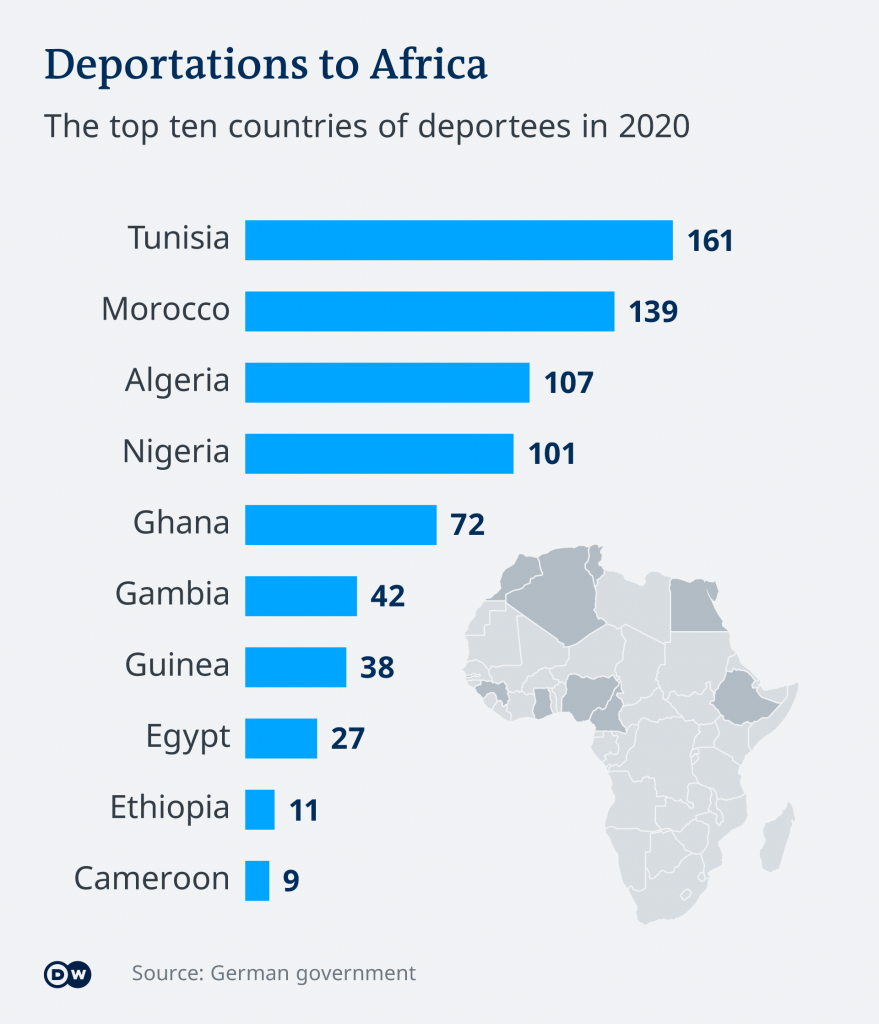
By Momodou Janneh
To some, the two terms, forced and voluntary return, are similar and even interchangeable. To some others, the terms are confusing.
However, these two migration-related terms are significantly different, and knowing these differences helps to better understand the issue at hand.
Here is what you need to know about the two terms:
What is forced return?
Also known as expulsion or deportation, forced return is a formal act or conduct attributable to a State by which a non-national is compelled to leave the territory of that State, according to United Nations’ International Law Commission.
The terminology used at the domestic or international level on forced return is not uniform but there is a clear tendency to use the term expulsion to refer to the legal order to leave the territory of a State, and removal or deportation to refer to the actual implementation of such order in cases where the person concerned does not follow it voluntarily.
What is Voluntary Return?
There is no universally accepted definition of ‘return’ in migration. In its Glossary of Migration, IOM generally defines return as “the act or process of going back or being taken back to the point of departure. This could be within the territorial boundaries of a country, as in the case of returning internally displaced persons (IDPs) and demobilised combatants; or between a country of destination or transit and a country of origin, as in the case of migrant workers, refugees or asylum seekers”.
Return is either voluntary or forced.
Voluntary return, according to IOM, is “the assisted or independent return to the country of origin, transit or another country based on the voluntary decision of the returnee”.
Furthermore, voluntary returns can be either spontaneous or assisted. It is spontaneous return when a migrant or group of migrants voluntarily, independently return to their country of origin, usually without the support of States or other international or national assistance.
Assisted voluntary return and reintegration is the “administrative, logistical or financial support, including reintegration assistance, to migrants unable or unwilling to remain in the host country or country of transit and who decide to return to their country of origin”.
Difference between Deportation and Voluntary
| Deportation | Voluntary Return |
| Deportation involves the forceful removal of someone from a state or country against his/her will and taking them back to their countries of origin, or country of transit or third country, based on an administrative or judicial act.
|
Voluntary Return is the independent or wishful return to a country of origin through transit or another country based on the voluntary decision of the returnee.
|

Deportation processes and procedure
In The Gambia, the deportation process is usually misunderstood, owing purely to limited information on how deportation is carried out. Even though different countries have different rules, and procedures for deportation, an explanation of how it is done in Germany, which may be similar with other European countries, is explained here.
When an asylum application is conclusively rejected, or in case where a migrant loses residence permit (or were never issued one), the migrant is obliged to leave Germany. In such cases, the Federal Office for Migration & Refugees (BAMF) asks the migrant to leave within a specified time limit and threatens deportation according to the Asylum Act.
BAMF sends a formal notice (a “threat of deportation”) to the migrant concerned, specifying the destination of deportation. In principle, when an asylum application is rejected, a migrant received a deportation order along with rejection notice from BAMF. The deportation orders are sent as registered letters; which means the BAMF knows when the letter arrives in a migrant’s mailbox.
With a “simple rejection”, the migrant has 30 days to leave Germany voluntarily. If an application for asylum is rejected as “inadmissible” or “obviously unfounded”, the concerned migrant has only one week to leave Germany.
Asylum application can be rejected as “inadmissible”, if, due to the Dublin Regulation, another EU country is responsible for the asylum case. Asylum application may be rejected as “obviously unfounded” when, for instance, the BAMF sees significant contradictions in the migrant’s story or his/her reasons for fleeing to Germany was solely for economic reasons.
After receiving a deportation order, one must seek advice from a lawyer or a counselling centre. Even if the asylum application has been rejected, there are still some options which can enable a migrant to stay in Germany.
If the migrant neither voluntarily leaves Germany within the designated deadline nor takes any further actions, the police may be called to intervene, and the migrant may be forcibly sent back to his/her home country or to a third country if there is an agreement with that country where they will accept the migrant.
Deportation is regulated in Germany under the Residence Act.
 A deportation can take place, only when sending the person back is actually possible and not prohibited by law. Therefore, before deportation, all the possible obstacles (legal or practical) are examined.
A deportation can take place, only when sending the person back is actually possible and not prohibited by law. Therefore, before deportation, all the possible obstacles (legal or practical) are examined.
The German Immigration Office is responsible for the deportations. If deportation is forbidden by law or simply not possible for practical reasons, the German Immigration Office may grant the migrant concerned a tolerated stay or issue you a residence permit.
EU Directive
In December 2008, the European Parliament and the Council of Europe adopted a directive on common standards and procedures in Member States for returning illegally staying third-country nationals.
It is recognised that it is legitimate for Member States to return illegally staying third-country nationals, provided that fair and efficient asylum systems are in place which fully respect the principle of non-refoulement.
Therefore, EU Member States should ensure that the ending of illegal stay of third-country nationals is carried out through a fair and transparent procedure. According to general principles of EU law, decisions taken under this Directive should be adopted on a case-by-case basis and based on objective criteria, implying that consideration should go beyond the mere fact of an illegal stay.
When using standard forms for decisions related to return, namely return decisions and, if issued, entry-ban decisions and decisions on removal, Member States should respect that principle and fully comply with all applicable provisions of this Directive.













